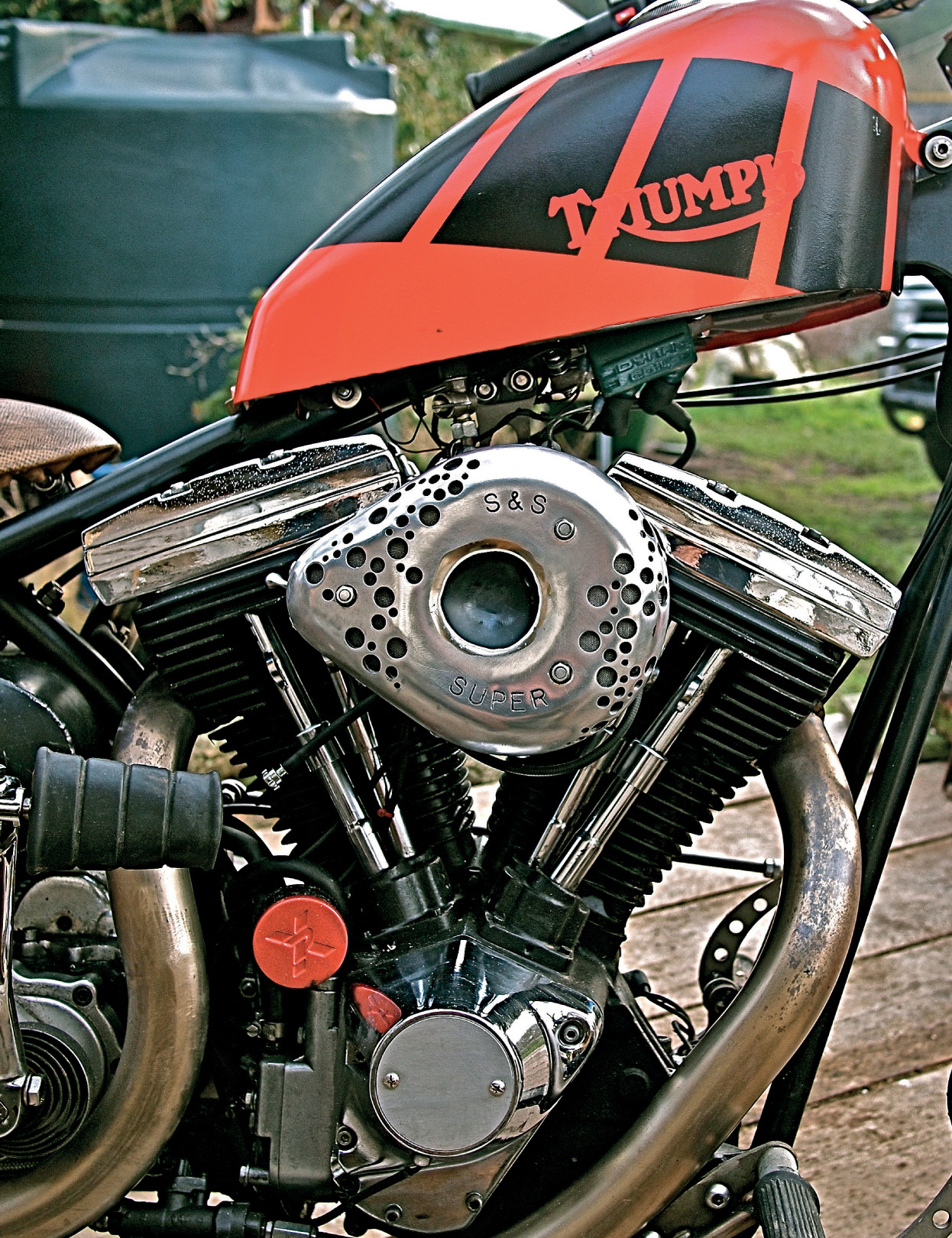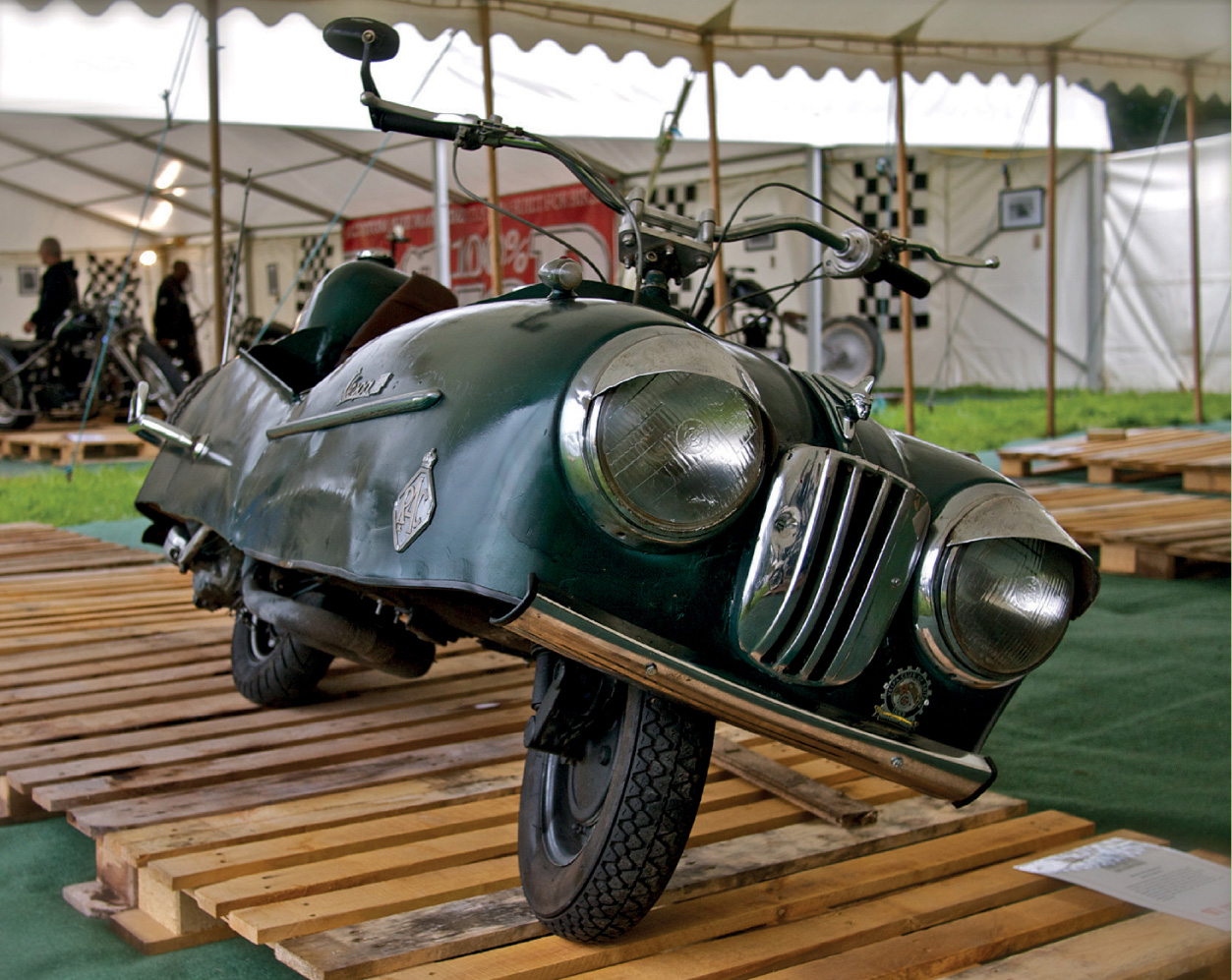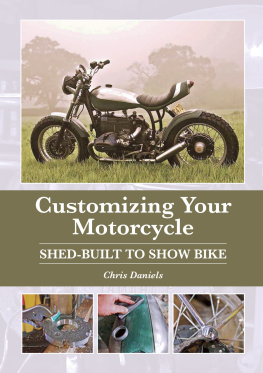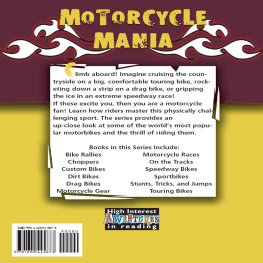Customizing Your
Motorcycle
SHED-BUILT TO SHOW BIKE
Chris Daniels

THE CROWOOD PRESS
First published in 2018 by
The Crowood Press Ltd
Ramsbury, Marlborough
Wiltshire SN8 2HR
www.crowood.com
This e-book first published in 2018
Chris Daniels 2018
All rights reserved. This e-book is copyright material and must not be copied, reproduced, transferred, distributed, leased, licensed or publicly performed or used in any way except as specifically permitted in writing by the publishers, as allowed under the terms and conditions under which it was purchased or as strictly permitted by applicable copyright law. Any unauthorised distribution or use of thistext may be a direct infringement of the authors and publishers rights, and those responsible may be liable in law accordingly.
British Library Cataloguing-in-Publication Data
A catalogue record for this book is available from the British Library.
ISBN 978 1 78500 370 7
Frontispiece: A Honda NX650 big thumper leaving my shed in style; weight saved by dumping the rubbish turns it into a serious twisty lane and town bike. And it looks good.
contents

Customizing Your
Motorcycle
SHED-BUILT TO SHOW BIKE

welcome to our world
A WONDERFUL WORLD
In a world of safety concerns and risk assessments, it is not easy to celebrate the individual. Sure, individualism can be expressed by dressing differently, becoming an explorer or just dropping out, but these methods can all impinge too much on daily life. As an alternative, many people buy mass-produced items they believe will make a statement of how they stand out from the crowd. Eventually, though, there comes a time when the ownership of off-the-shelf technology and cheap rubbish, manufactured by tiny hands in far-off countries, starts to become meaningless and trivial. This is a shame, as the world has much to offer in terms of enjoyment and enrichment, not all of which is to be found on a thumb-operated screen, but the real question is, how do you know where it is, and then, more importantly, how can you participate?
While there are no simple answers to these questions, for those with a desire to leave the sheep behind, who are blessed with gumption, and possess fair motor skills and opposable thumbs, a decent solution exists: take a standard motorcycle, throw away the garbage and build a custom bike!
Who could fail to be impressed by the coolness of a well-turned-out bike? Who would not appreciate the freedom of the open road (or field) on a machine that has been transformed, by someone using their imagination and hand skills, into an assertion of life? Hopefully within the following pages, a basic understanding of working on these lovely machines will be engendered, whilst the concepts of how to tailor them using readily available tools, equipment and ideas will be set out in an understandable and practical way. Most forms of transportation cars, trains, and so on are designed to move people about in maximum safety and with minimum fuss. What bikers are after is excitement, style and fun. Unfortunately, as the manufacture of bikes has become a massive business, the machines over the years have been (over) developed into catering for the lowest common denominator, designed to be mass produced.

Shed-built Harley bobber, with a bold distinctive colour scheme created using spray cans, with stick-on vinyl Triumph logo. The air-filter cover was customized by drilling random holes and polished using a wheel in a drill press, with fine mesh secured on the inside with silicone rubber.

The epitome of shed creativity? This lovely machine was built using a scooter as the basis and classic-car bodywork, to create a unique and practical custom for very little cost. Imagination and experimentation are two of the best tools in the customizers arsenal.
UNIVERSAL CUSTOM

Classic shed customizing at its best: simple and sweet, Bens old Triumph would not look out of place in a 1950s biker flick, outside a Paris wine bar in the 1960s or rolling into the car park of a modern design studio. All unnecessary stuff was binned and the old worn-out seat was replaced using an old leather jacket.

Definitely not shed-built, this shop-manufactured custom is a standard bike with lots of lovely bits stuck on. It requires no more input from its new owner than looking through a glossy catalogue and getting a cheque book out; the amount it costs would buy about fifteen second-hand classic runners.

Pepes Moto Guzzi has a wealth of shed custom details: the brass and copper fitments, electrics box made from an old motor housing and rustic seat all give it a singular charm. Some might prefer more minimalism and tidiness in the routing of the cables and wires, but most are happy for them to be an integral part of the whole scheme.
Basically, a motorcycle is an engine slung on a metal frame between two wheels and it is this simplicity that allows it to be light, nimble and easy to work on. Well, that was true when they first came out and it carried on for many years, allowing creative people to take the basic layout and expand on it. The manufacturers, seeing that there was a definite market for the individual bike, set to with a vengeance to create mass-produced custom bikes; they have flooded the world with creations that range from the sublime to the ridiculous, capturing an audience that totally ignores the irony of purchasing a factory custom.
Consider the differences between the bikes of days gone by and the new wave of factory output; while this may appear to be an exercise in cynicism (or critical examination if you will), it is quite important to appreciate constructional evolution when choosing a bike to customize. The most appreciable difference is space, older bikes tend to have a lot more room around the engine, be skinnier and look lighter.
Newer bikes have been computer-designed to fill out all the spaces with cleverly located components, shiny gewgaws and acres of plastic; the result is often a stolid, boring and complicated machine devoid of character. Other obstacles on newer bikes are electronic and fuel systems, which can be a pain to organize. This is especially the case when going minimal, as many of them need computer control, or to be set up via a computer-controlled system.
It makes sense to use as your basis a bike that can actually be worked on at home, so the first piece of advice is this: do not buy some overly convoluted, electronically controlled spaceship of a bike, but keep it simple and go classic.
Next page






















